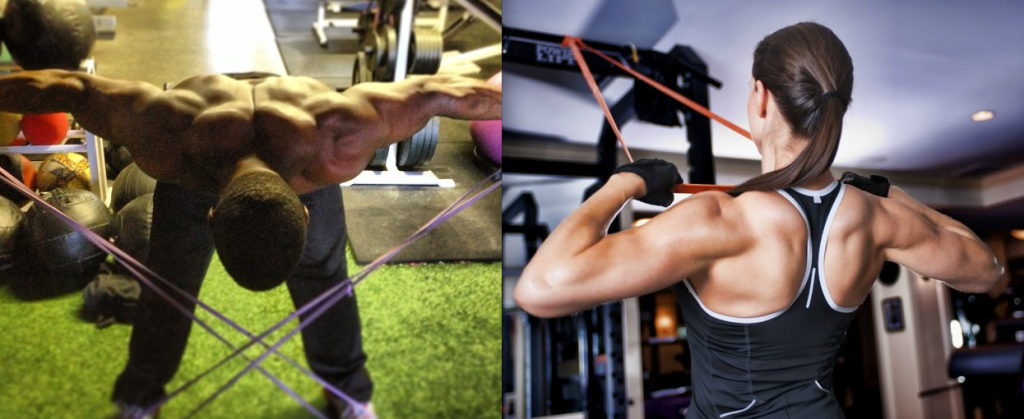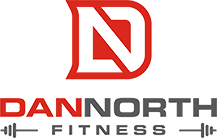I am going to paraphrase here, but a wise man by the name of Jim Smith (founder of Diesel Strength and Conditioning) says that “Every program should focus on extension, external rotation, and abduction”.
Naturally, we are prone to using exercises that are internal rotators of the limbs because they target the showy muscles of the body. Benching, overhead pressing, lat pulldowns, bent over rows, bicep curls…the fact of the matter is that if most of us went through an actual assessment where we were looking at our shoulder and upper back mobility, we would notice that there are definitely limitations in our overall range of motion.
So, with that being said…why is everyone still benching and doing half-ass bent over rows and pulldowns and wondering why they’re feeling like shit?
A strong back is super important to your health and performance, no matter who you are. So when it comes to training your posterior chain, its important to choose exercises that are actually benefiting your postural integrity with adequate amounts of (as Smitty says) extension, external rotation, and abduction.
A common back training day for most people will have exercises like chin ups or pull ups, lat pulldowns, pull overs, and bent over dumbbell rows. The problem here is that the majority of these exercises specifically target the lats, which are internal rotators of the shoulders. So, if you have shitty posture with internally rotated shoulders, and your idea of improving your posture and making your back stronger is doing a bunch of lat exercises, you are only making the current situation worse.
PRO TIP 1: Perform more horizontal pulling than vertical or overhead pulling. Seated row variations, band pull apart variations, and other horizontal rowing exercises will target the mid back muscles, which will help maintain extension and integrity in the spine without further internally rotating the shoulder joint.
PRO TIP 2: You do not need to use weights to build a stronger back. Think about what the muscles of the back are actually doing all day. They are supporting the spine during various positions and work together to maintain postural integrity throughout the day.
BODYWEIGHT BACK-BUILDING EXERCISES
ISO Y-W-T
Isometrics are a great tool to make your muscles work hard without putting any added stress on your joints and ligaments. These isometric Y-W-T variations target all of the smaller upper back muscles that barely get any attention when performing pull ups or heavy bent over dumbbell rows. Why? Because you can’t cheat these exercises. Even though you are only using your bodyweight, they will humble you. Don’t believe me? Try them out then get back to me.
BLACKBURN (HANDCUFFS)
“GET DOWN WITH YOUR HANDS BEHIND YOUR BACK!!”
Basically pretend you are getting arrested with this one here. Lay on your stomach, reach above your head with your thumbs up to the ceiling, make a big circle while bringing your hands behind your back, squeeze your shoulder blades together with emphasis on retracting the scapula.
Tip: Pretend you are holding two markers and trying to make as big of a circle as you can when bringing your hands around to ensure you are keeping your arms locked.
Avoid: Hyperextending your lower back at the finish of the movement by bringing your chest off the ground. The purpose of the exercise is to retract the sculpt while applying tension to the upper back muscles. So to do this just move the shoulders during the finish, rather than extending the lower back and bringing the chest off the ground.
ROWING EXERCISES

BANDED ROW VARIATIONS
Set a band up at about shoulder height for this sequence. There are a ton of different band pull apart variations so I will include a few here. You can use these exercises as a pre-cursor warm up tool for weight training, whether you are planning on benching or doing some overhead presses. These are also great if you’re a weightlifter and are going to be snatching or doing anything overhead as these exercises specifically target the supportive muscle groups of the upper back and shoulders used in all of the overhead Olympic lifts.
PENDLAY ROW
You don’t need to go heavy with bent over rows to build a solid back. Why? Usually when lifters try to stack weight on the bar, they end up using way too much momentum and over compensating with their upper traps and arms. The great thing about Pendlay rows are that you can’t cheat by using momentum since your chest is glued against a bench. The only thing that can move the bar are your upper back muscles.
SEATED ROW VARIATIONS
99% of the population will benefit more from horizontal rowing exercises than overhead pulling. To reiterate, rowing exercises effectively target the mid back muscles as opposed to overemphasizing the lats, which again, are internal rotators of the shoulder joint.
Use any and all of the row variations. Single arm, high row, wide grip, neutral, underhand…The more the better. The number one key to building muscle is variety. Attack your back with all of the row variations.
EXTENSION EXERCISES
A healthy torso has the ability to flex, extend, rotate, and move laterally while supporting the spine. Adequate amounts of extension work should make up a good chunk of your programming.
Its easy to put these exercises at the end of your to-do list because they don’t work the ‘showy’ muscles of the body, like the pecs, shoulders, or arms. No one really walks around getting compliments about their lower back. The fact of the matter is if you don’t incorporate any extension work into your training, you are missing one of the key elements of your posture, longevity, athletic performance, strength, and overall health.
BIERING SORENSEN EXTENSION
Think of this as a reverse plank for your lower back. You can do this on your own, or have a partner sit on the back of your calves to hold your weight down so you can support yourself upright with your lower back muscles. This isometric exercise trains your lower back in a very specific manner because you are mimicking what it is intended to do throughout the day…support the torso.
As with most of the exercises in this post, this is non-taxing on the joints and nervous system, but still provides a ton of benefit for the lower back. So you can do this more often than deadlifting and not feel beat up as a result of it.





